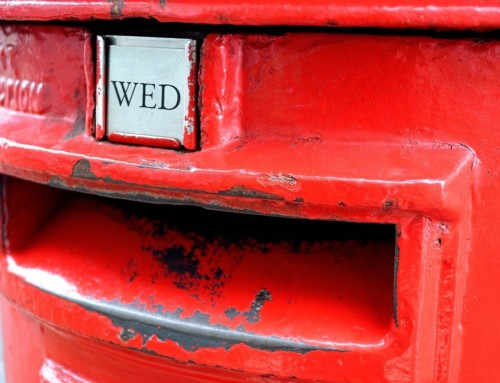What is a trademark?
A trademark is a sign capable of distinguishing the goods or services produced or provided by one business or organizational enterprise from those of other enterprises. Any distinctive words, letters, numerals, drawings, pictures, shapes, colors logotypes, labels or combinations used to distinguish goods or services may be considered a trademark. In some countries, advertising slogans are also considered trademarks and may be registered as such at national trademark offices. An increasing number of countries also allow for the registration of less traditional forms of trademarks such as single colors, three-dimensional designs
Examples:
1. Trademarks: Microsoft; Froot Loops; Ford
2. Service marks: Blockbuster; Mc Donalds; Kinkos
3. Logotypes: CBS eye ina circle; Apple Computer’s Apple; NIKE Swoosh
4. Color Marks: KODAK Yellow Packaging; Howard Johnson Orange Roof; Owens-Corning Pink Fiberglass Insulation
5. Trade Dress: COCA COLA Bottle Shape; Banana Republic Decorating Motif; Pillsbury Doughboy
6. Slogans: Microsoft’s “Where do you want to go today?”, IBM’S “Solutions for a small planet”, Clairol’s “Hair color so natural, only her hairdresser knows for sure”.
7. Sounds: MGM’S Lion Roar; Harley Davidson’s Motorcycle Exhaust Sound; NBC’S Chimes.
8. Collective Marks: ILGWU (International Ladies’ Garment Workers’ Union; Girls Scouts Of America; AAA (American Automobile Association).
9. Certification Marks: Good Housekeeping Seal of Approval; Harris Tweeds; Roquefort Cheese.
What are trademarks for?
The main function of a trademark is to enable consumers to identify a product [whether a good or a service] of a particular company so as to distinguish it from other identical or similar products provided by competitors. Consumers who are satisfied with a given product are likely to buy or use the product again in the future. For this, they need to be able to distinguish easily between identical or similar products. By enabling companies to differentiate themselves and their products from those of the competition, trademarks play a powerful role in the branding and marketing strategies of companies, contributing to the definition of the image and reputation of the company’s products in the eyes of consumers. The image and reputation of a company create trust, which is the basis for establishing a loyal clientele and enhancing a company’s goodwill. Consumers often develop an emotional attachment to certain trademarks based on a set of desired qualities or features embodied in the products bearing such marks.
Trademarks also provide an incentive for companies to invest in maintaining or improving the quality of their products in order to ensure that products bearing their trademark have a positive reputation.
The value of trademarks
A carefully selected and nurtured trademark is a valuable business asset for most companies. For some, it may be the most valuable asset they own. Estimates of the value of some of the world’s most famous trademarks such as Coca-Cola or IBM exceed $70 billion each. This is because consumers value trademarks, their reputation, their image and a set of desired qualities they associate with the mark, and are willing to pay more for a product bearing a trademark that they recognize and which meets their expectations. Therefore, the very ownership of a trademark with a good image and reputation provides a company with a competitive edge.
Why should your company protect the trademarks and service marks?
While most people running a business realize the importance of using trademarks to differentiate their products/services from those of their competitors, not all realize the importance of protecting them through registration. Registration, under the relevant U.S. trademark law, gives your company the exclusive right to prevent others from marketing identical or similar products/services under the same or a confusingly similar mark. Without trademark registration, your investments in marketing a product may become wasteful as rival companies may use the same or a confusingly similar trademark for identical or similar products/services. If a competitor adopts a similar or identical trademark, customers could be misled into buying the competitor’s product/service thinking it is your company’s product/service. This could not only decrease your company’s profits and confuse your customers, but may also damage the reputation and image of your company, particularly if the rival product/service is of inferior quality.
Given the value of trademarks and the importance that a trademark may have in determining the success of a business in the marketplace, it is critical to make sure that it is registered in the relevant markets. In addition, a registered trademark may be licensed to other companies, thus providing an additional source of revenue for your company, or may be the basis for a franchising agreement. On occasion, a registered trademark with a good reputation among consumers may also be used to obtain funding from financing institutions that are increasingly aware of the importance of brands for business success.
Trademarks:
* Ensure that consumers can distinguish between products and services;
* Enable companies to differentiate their products and services;
* Are a marketing tool and the basis for building a brand image and reputation;
* Are licensed and provide a direct source of revenue through royalties;
* Are a crucial component of franchising agreements;
* May be a valuable business asset;
* Encourage companies to invest in maintaining or improving product and service quality
* May be useful for obtaining financing.
How can your company protect its trademarks and service marks?
Trademark protection can be obtained through registration and, in some countries, also through use. Even where trademarks can be protected through use, you are well advised to register the trademark by filling the appropriate application. Registering a trademark will provide stronger protection, particularly in case of conflict with an identical or confusingly similar mark. Is the registration of the business name of your company sufficient? Many people believe that by registering their business and its trade name at the state business registry, the name would automatically be protected as a trademark. This is a rather common misconception! It is important to understand the difference between trade names and trademarks. A trade name is the full name of your business, such as “Blackmark International Inc.” and it identifies your company. It often ends with Inc., Corp., LLC, or Ltd or other similar abbreviations that denote the legal character of the company. A trademark, however, is the sign that distinguishes the product/service of your company.
A company may have various trademarks. For instance, Blackmark International, Inc may sell one of its products as BLACKMARK but another as REDMARK. Companies may use a specific trademark to identify all their products/services, a particular range of products/services, or one specific type of product/service. Some companies may also use their trade name, or a part of it, as a trademark and should, in that case register it as a trademark.
Five point checklist for selecting trademark:
* Check that your trademark of choice meets all the legal requirements for registration;
* Conduct a trademark search to make sure that it is not identical or confusingly similar to an existing trademark;
* Make sure the trademark is easy to read, write, spell and remember and is is suitable to all types of advertising media;
* Make sure the mark does not have any undesired connotations in your own language of any of the languages of potential export markets;
* Check that the corresponding domain name [i.e. Internet address] is available for registration
How to Steer Clear of Trademark Errors When you Own Your Own Business
1. Avoid misuse
2. Reduce litigation
3. Avoid infringement or dilution
4. Don’t let your trademark become generic or abandoned
5. Don’t risk your company’s assets, goodwill or reputation
Source: “MAKING A MARK!”
An Introduction to Trademarks for Small and Medium-Sized Enterprises” by Carol Desmond http://www.trademarkstogoinc.com/

![Reblog this post [with Zemanta]](https://img.zemanta.com/reblog_e.png?x-id=f03c7a6e-ee94-4590-a5c1-7ef61afa1c1c)




